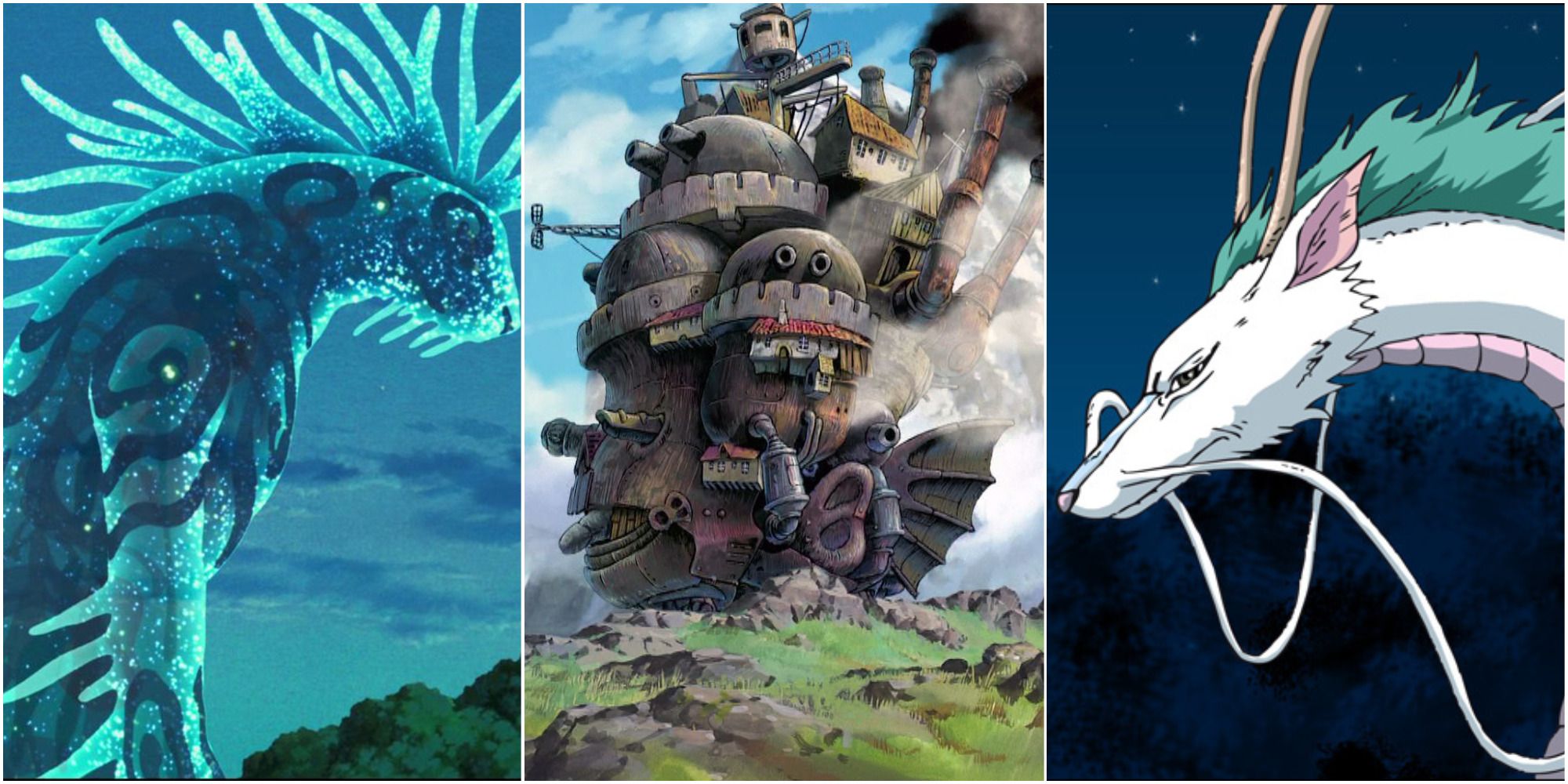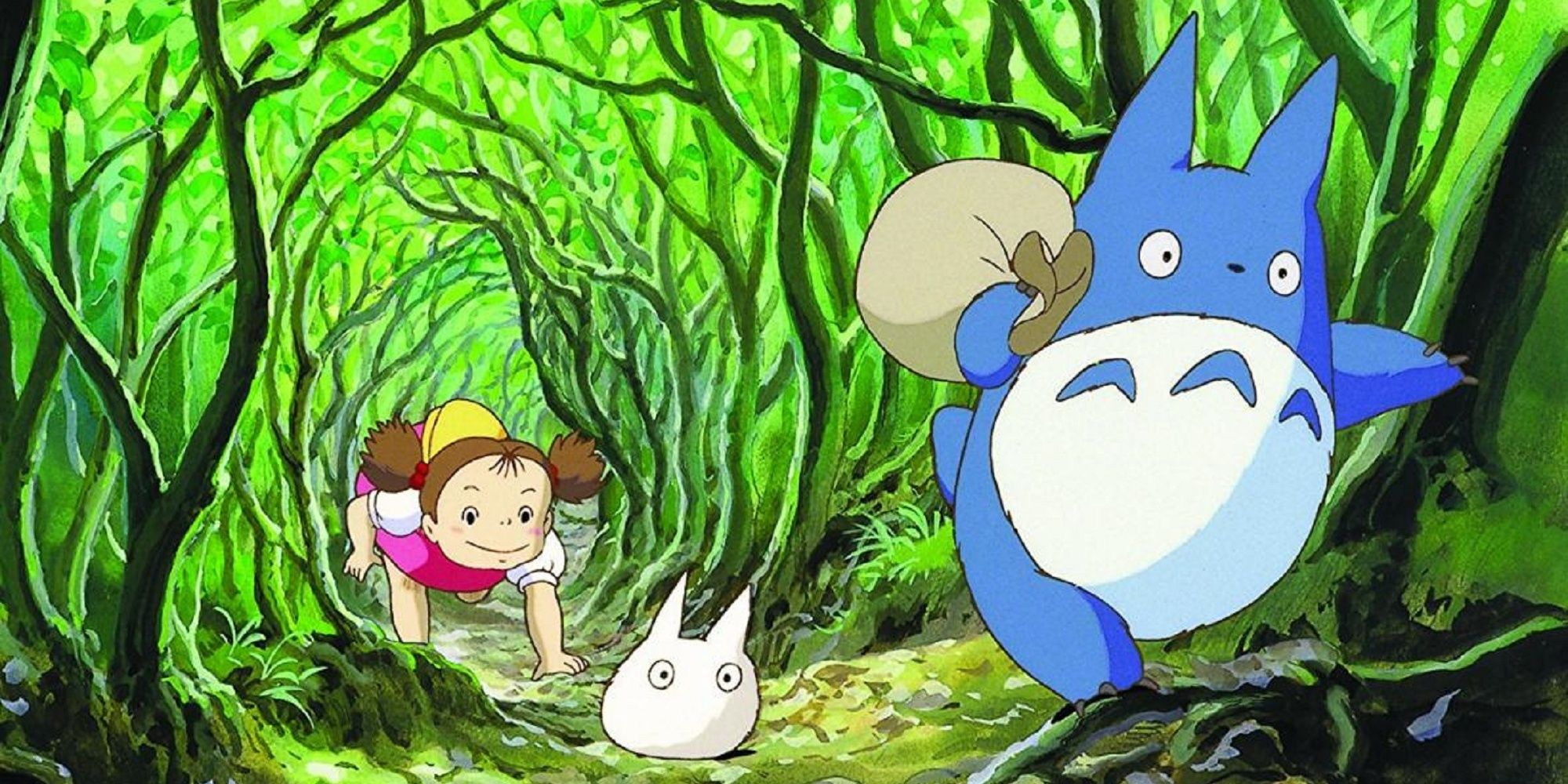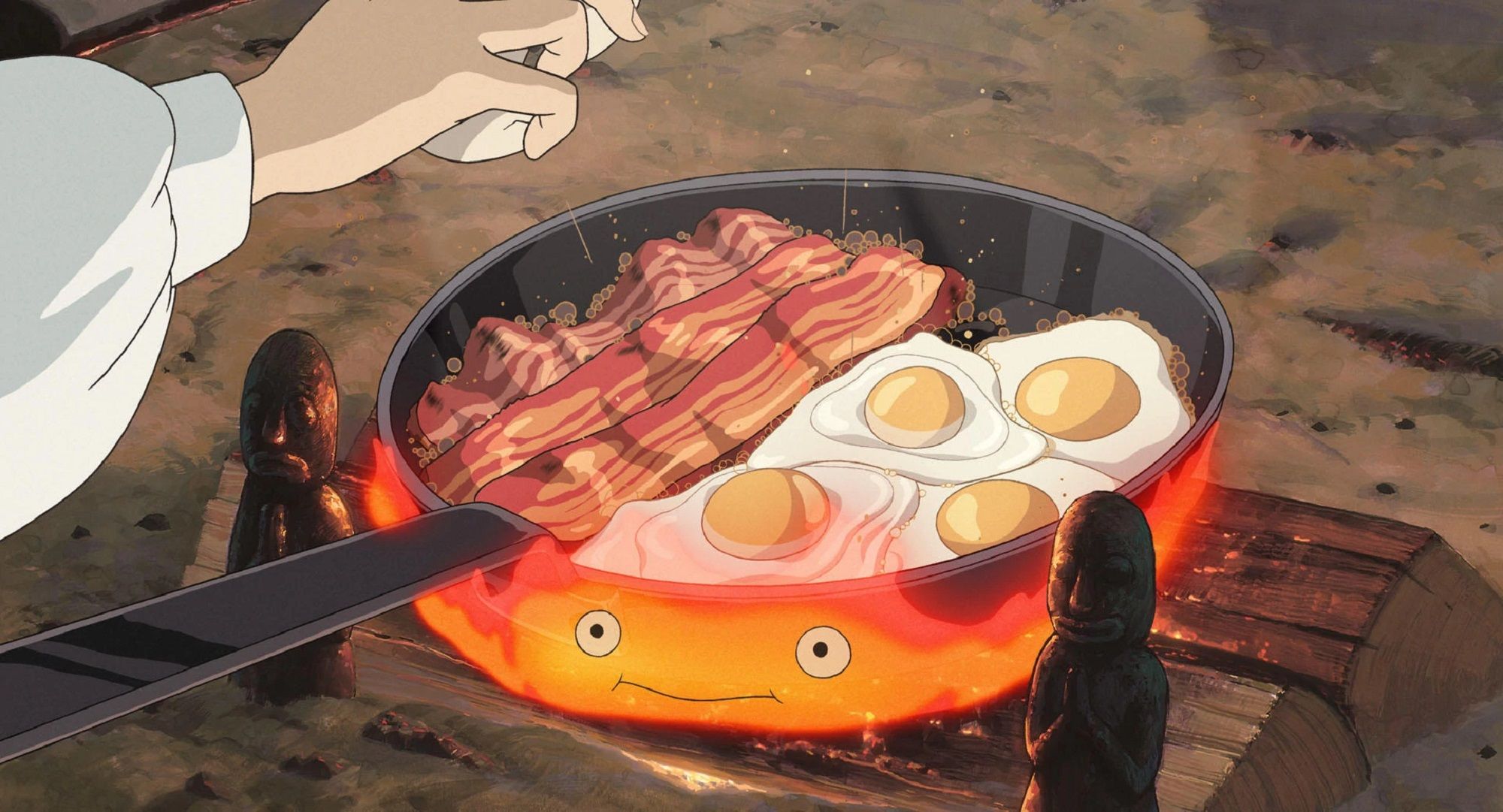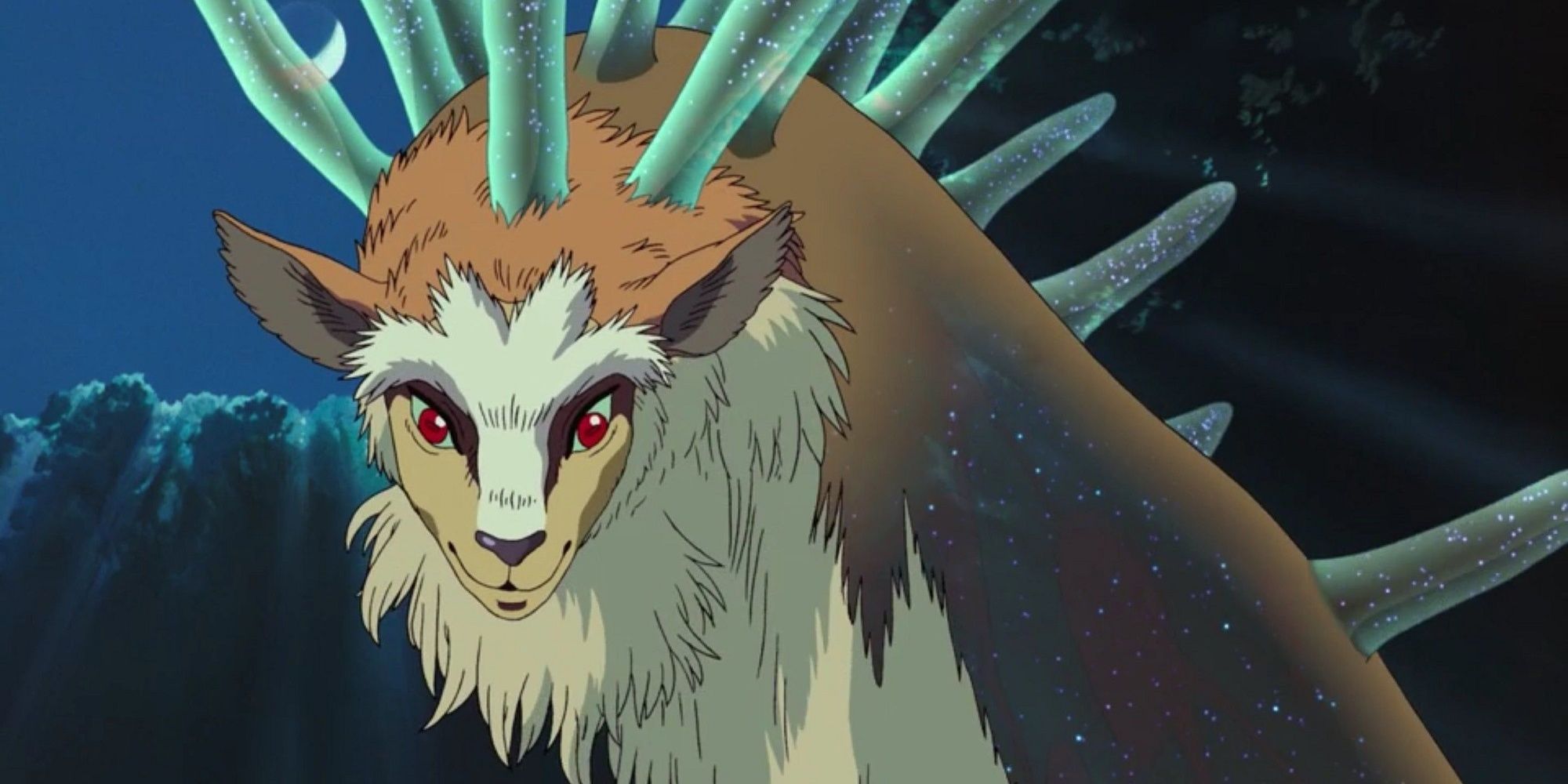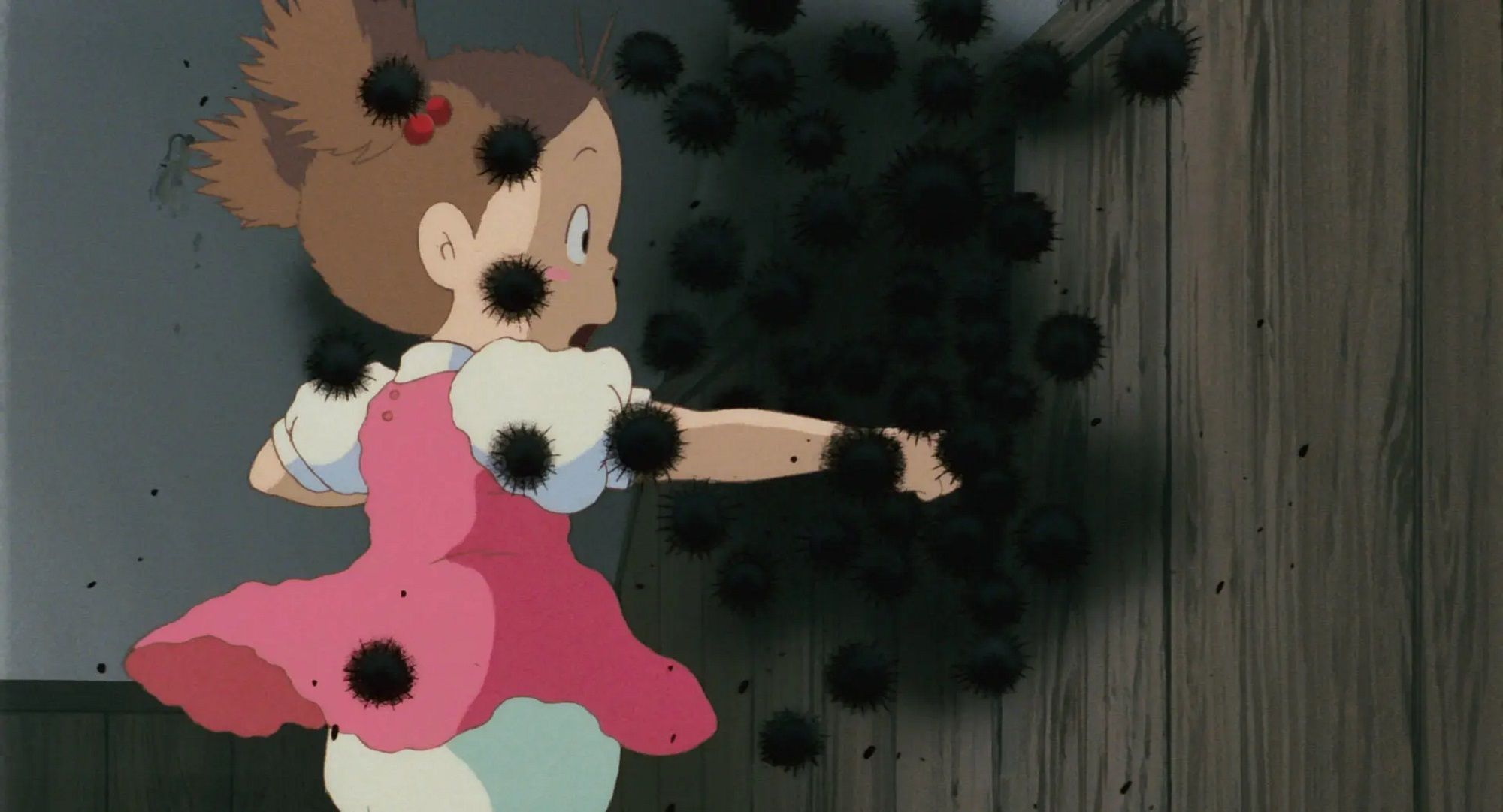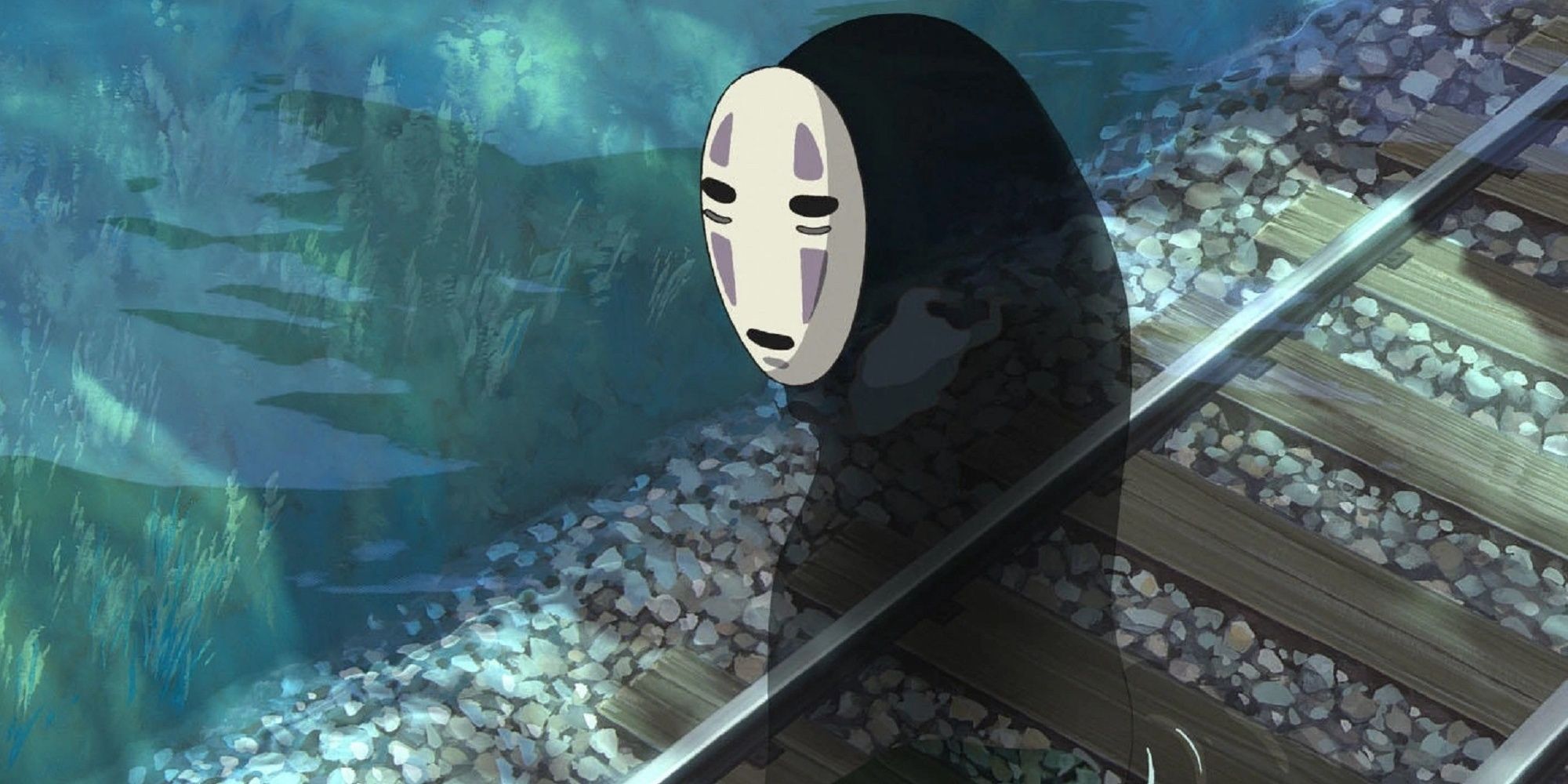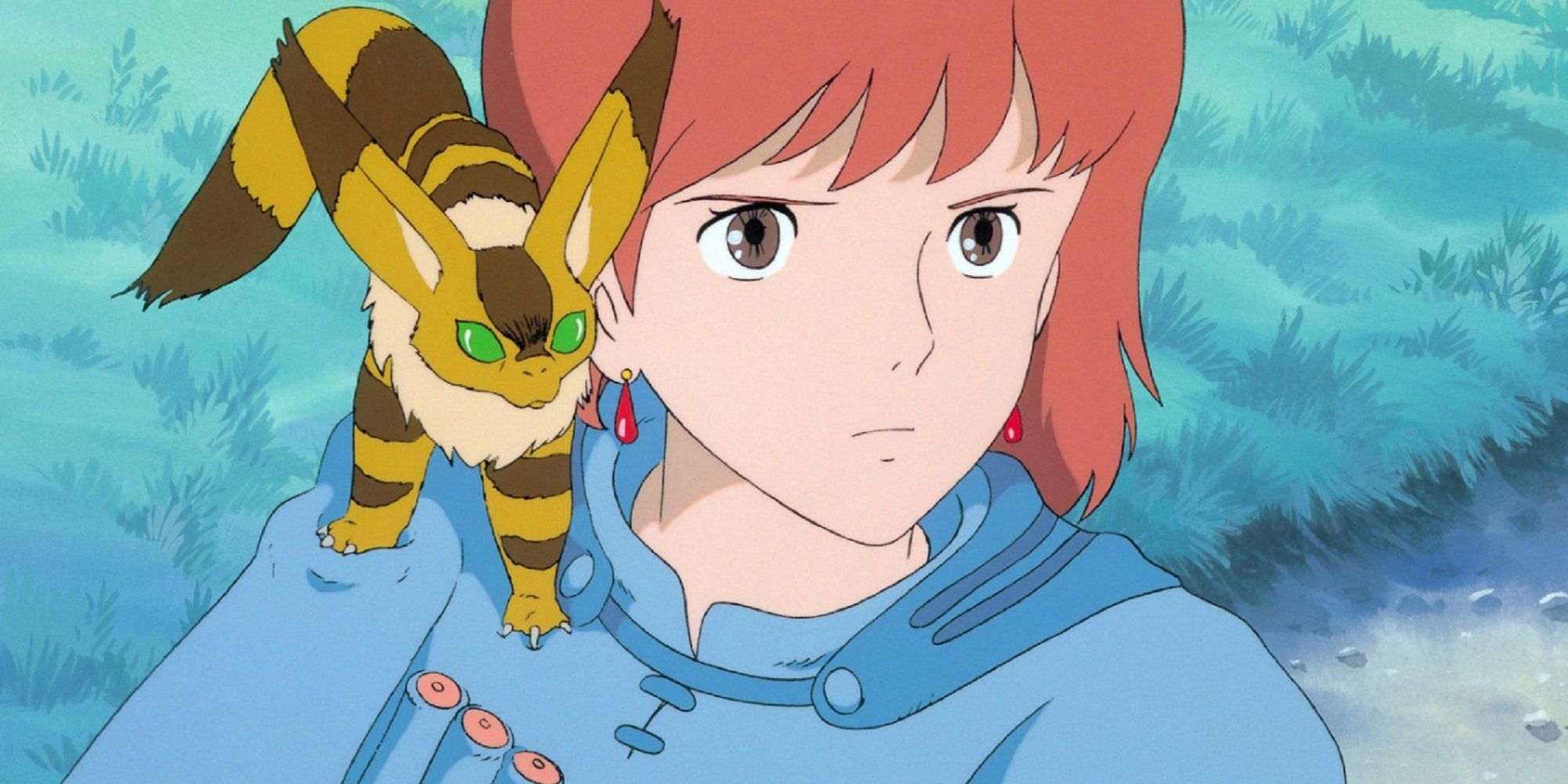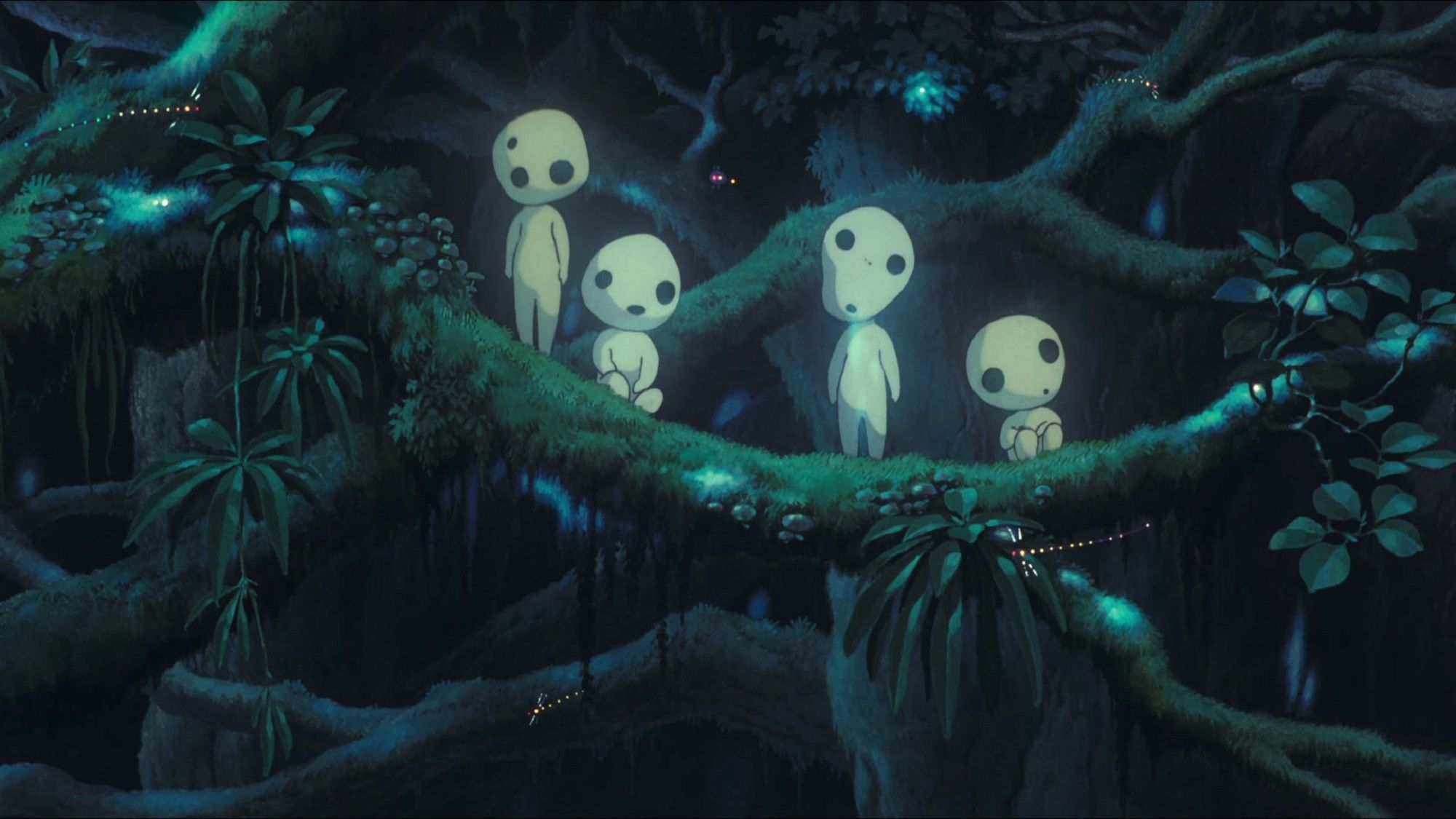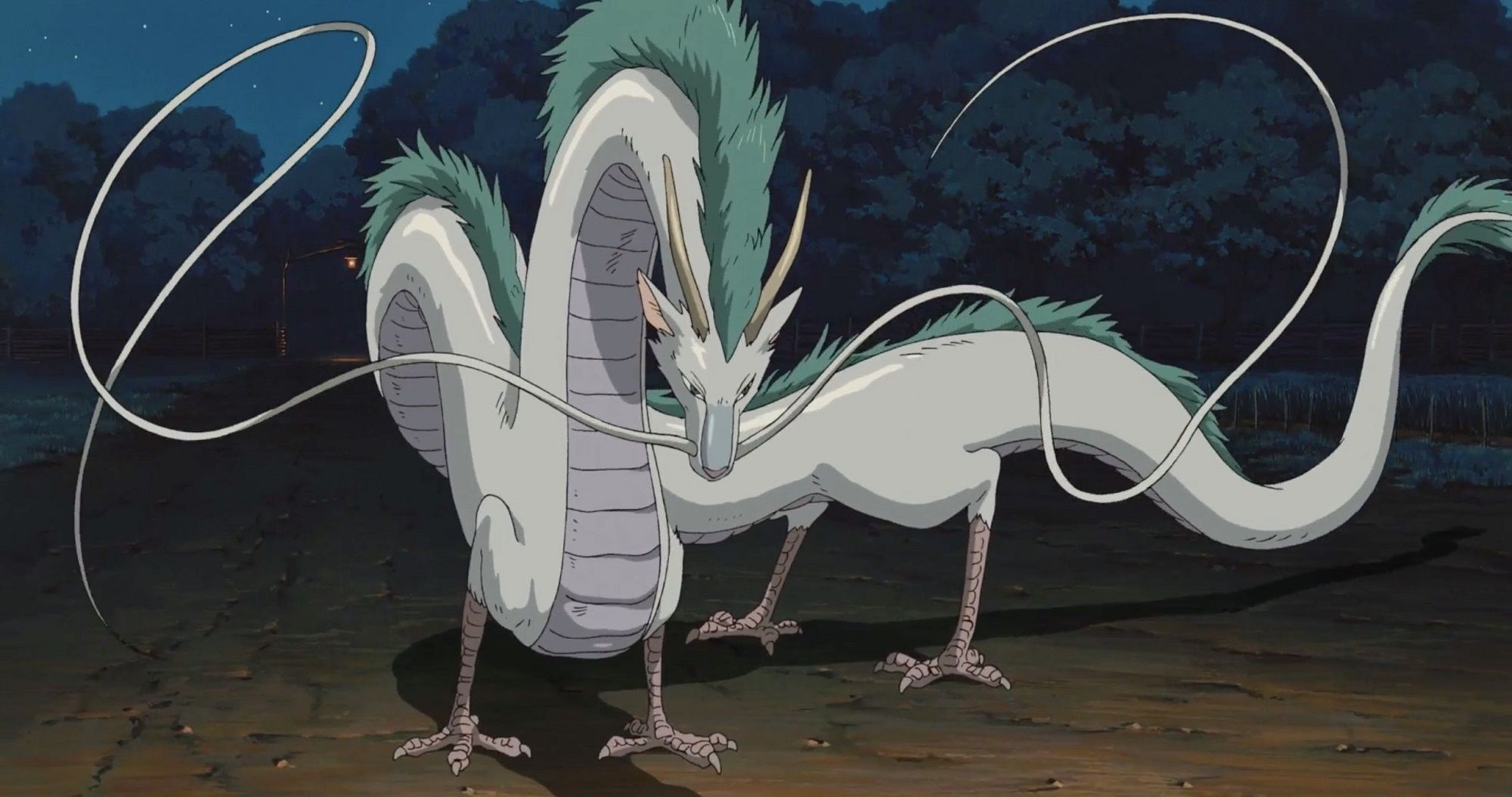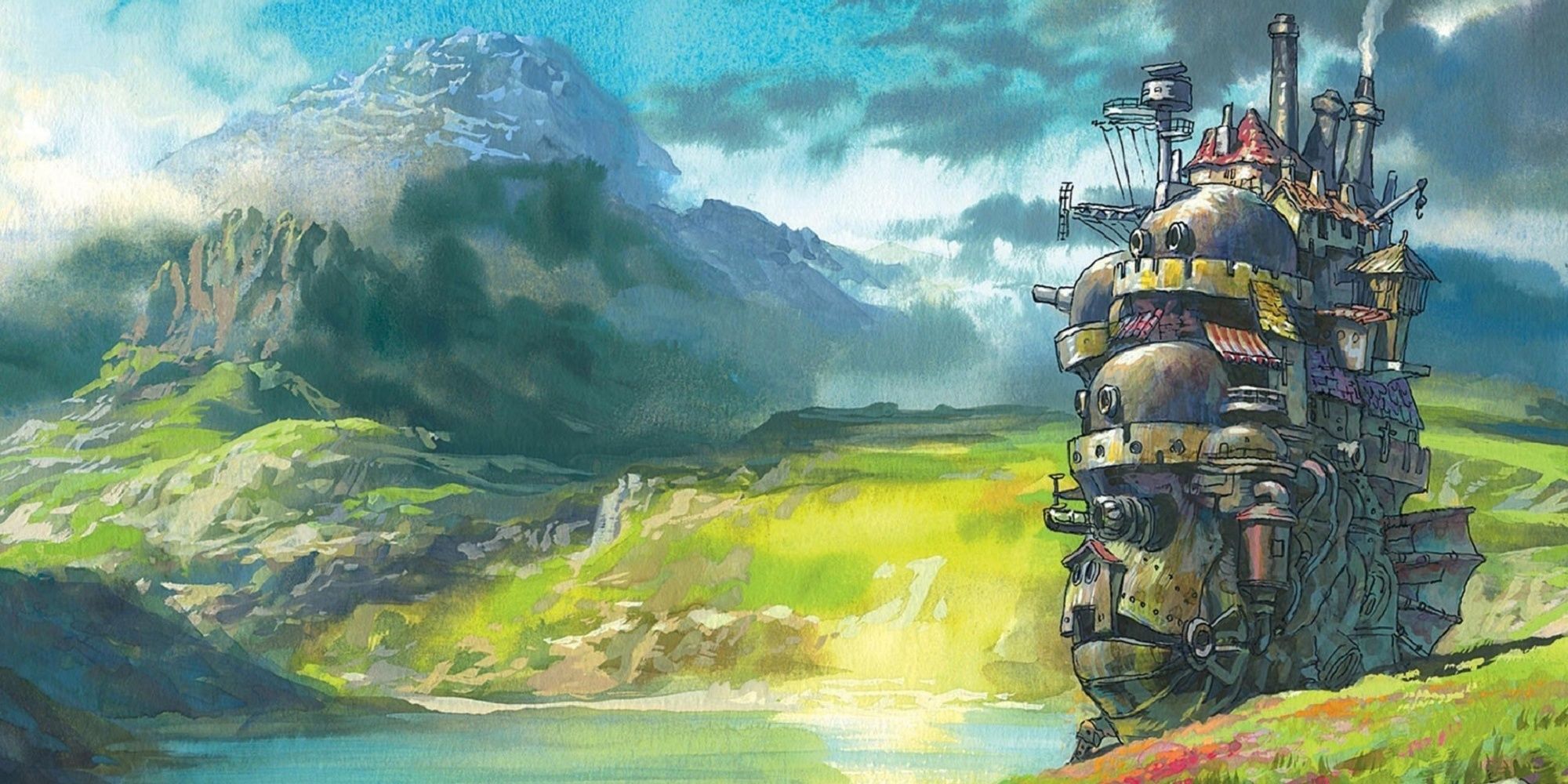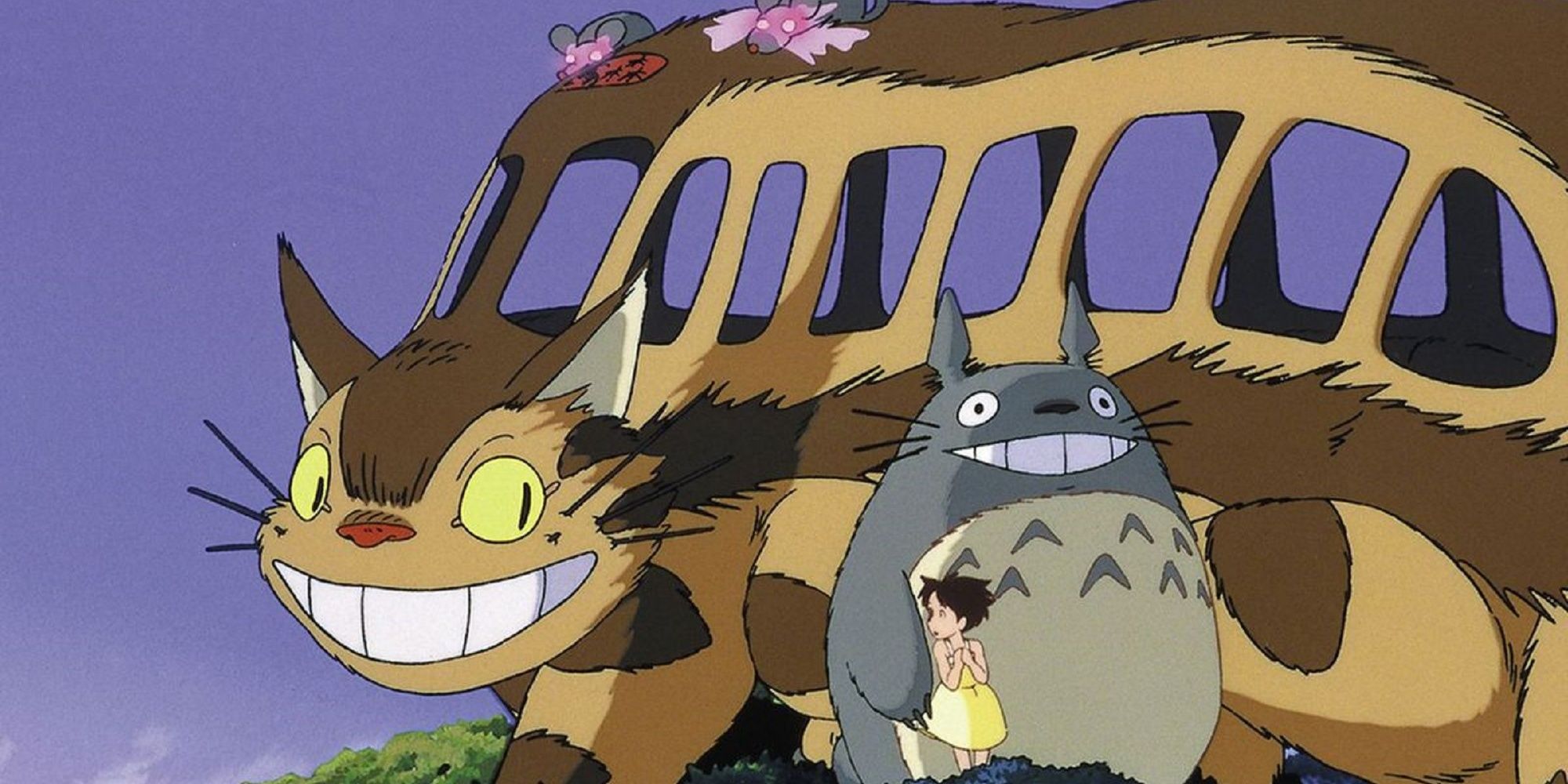Studio Ghibli is one of the most well-known and beloved animation companies in the world. The Japanese studio is known for its themes of folklore and environmentalism, which is the perfect recipe for some incredible fantasy characters. On par with Disney, it has created an array of wondrous stories and whimsical creatures that are so popular that there is even a Studio Ghibli theme park in the making.
Some of these creatures have become synonymous with the fierce optimism that encapsulates their films, which is why fans hold them so dear to their hearts. None of the creatures are simply just creatures – they are always more, filled with life, personality, and lessons to be learned.
Chu Totoro (My Neighbor Totoro)
Totoro is the defining character of Studio Ghibli. The gigantic, furry, owl-like creature is the company's mascot, and rightfully so, with his long claws for holding umbrellas, and enormous belly that doubles as a whimsical trampoline. Totoro is the coziest creature in all of the films.
But even cuter is Chu Totoro, the miniature, blue Totoro that is seen at the beginning of the film with its burglar bag full of acorns. It is an adorable introduction to the creatures that rule the forests around Mei and Satsuki's new home. Chu Totoro and its brethren stand for the life essence of the forest, or “kami,” in Japanese terms. They are the spirits that watch over and bring life to all that is around them, which is what makes My Neighbor Totoro so special.
Calcifer (Howl's Moving Castle)
Calcifer is the bacon-burning, wise-cracking bundle of fire that fuels Howl's Castle. He is the former falling star that welcomes Sophie into his home with a magical bargain, hoping that she will be the one to finally break his curse.
Despite his peevish demeanor, Calcifer has a heart of gold, which partially belongs to Howl. Howl gave his own heart to the fallen star, binding them together. Calcifer cares for Howl and Sophie very much, always looking out for his master, afraid that Howl may forever change for the worst as time goes by. The film is a reimagining of the fairytale, Beauty & the Beast, and this shows in how Calcifer is truly the heart of Howl's Castle in every way, much like Beast's. He stirs the passion in its core, always keeping it moving, even in Howl's darkest moments.
Forest Spirit (Princess Mononoke)
The Forest Spirit in Princess Mononoke is the god of life and death. And it certainly looks the part. During the day, it takes on the appearance of a magical deer, with too many antlers and an eerie, human-like face. But at night, it prowls the forests as the Night-Walker – the giant, translucent creature with shimmering tendrils.
The Shishigami is the protector of the Cedar Forest in the film, and it takes its job very seriously. It is the ultimate judge of life and death, choosing whether to let humans and creatures live or not. It heals Ashitaka, and yet takes the life of Moro, the god of the wolves. It brings balance to the planet, no matter how tough its choices may seem.
Soot Sprites (My Neighbor Totoro/Spirited Away)
The small, fuzzy creatures that run in a line and work their tiny hearts away in Studio Ghibli films are called “Susuwatari,” or soot sprites. And they are always a good judge of character. The soot sprites dwell in abandoned houses leaving dust in their wake, waiting to see if new inhabitants will be good roommates or not.
The Soot Sprites are adorable creatures that make squeaking noises, chase the shadows, and can be magically conjured despite being very independent. They are some of the simplest of the many creatures in Studio Ghibli films, and yet they still have very human characteristics. They are able to show emotions and care about those around them, as seen in My Neighbor Totoro with Mei.
No-Face (Spirited Away)
Spirited Away is home to many fantastical creatures, but No-Face takes the cake for being both the most likable and the most terrifying. No-Face is the tall, black spirit that eats individuals to gain their personality and traits. But at the same time, seeing him ride on the train next to Chihiro is a defining moment in the loss of innocence in childhood.
No-Face represents how Chihiro sees herself and the world around her. He is the purity of being molded as a child and the process of forming an identity in growing up and leaving that childhood behind. No-Face becomes fixated on Chihiro in its own loneliness when she loses her parents and experiences being alone for the first time.
Teto (Nausicaä of the Valley of the Wind)
Teto is a small fox squirrel that is given to Nausicaä as a gift from Yupa in the film. With his large, bunny-like ears and tanooki-esque body, he is one of the cutest pets to grace Studio Ghibli.
At first, he seems like a terrible pet though. He bites his new master and is very aggressive towards Nausiccaä. But he quickly realizes that she is wholly good and becomes very close to her. He proves to be a great companion to Nausicaä and is often found curled up on her shoulders.
Kodama (Princess Mononoke)
The Kodama in Princess Mononoke are a symbol that the forest is healthy. They inhabit the trees and wander the forest floors in search of the fallen and other miscreants. They also make distinctive clicking noises and bob their little heads in strange ways.
The glowing faces of the Kodama are part of what makes them stand out so much. They take on an otherworldly demeanor with the spin of their heads, and the way that their bodies turn more translucent with time. Alongside the Forest Spirit, they are the protectors of the forest, making it safe for the other inhabitants.
Haku (Spirited Away)
The dragon form of Haku is a stunning sight to behold. He glides through the sky with Chihiro like a serpent from the sea, with a teal mane and white body stained with blood. It makes him Studio Ghibli's most memorable dragon.
The name Haku means “master” or “lord,” and to Chihiro, he is just that. Haku is the only other human-like child she meets on her journey. He is able to teach her the ways of the bathhouse, as well as the fluidity of life. He is the lost spirit of the flowing river of Kohaku and symbolizes that Chihiro must "let go" in order to find herself.
Howl's Castle (Howl's Moving Castle)
Howl's Castle is the personification of Howl himself, powered and steered by the fiery fallen star, Calcifer. While it does not speak or have many traits of its own, its personality shines through in its interior and exterior. The inside is eclectic and chaotic, much like Howl himself, filled to the roof with plants and trinkets.
On the outside, the gargantuan castle is a hodge-podge of many different-looking houses held together by the sinews of Howl and Calcifer's magic. It is a different creature than most, as it has no real defining characteristics, and yet it is one of the most memorable parts of the film. It becomes magic itself through the fantastical way that it moves, with legs like a bird's, and puffs of smoke that give it a quirky familiarity.
Catbus (My Neighbor Totoro)
The meowing animal bus with the shining, yellow eyes for headlights makes for one of the most unique Studio Ghibli characters. With its pillow-soft seats that morph to fit your body and rows of feet that make it nearly fly, it is no wonder that the iconic Catbus is Mei's prime choice in transportation.
Catbus is based on the Japanese urban legend, “bakeneko,” in which it is believed that cats grow old enough to learn how to shape-shift. The best part about Catbus is that it cares. It is a magical creature who is always there for Mei and Satsuki in their time of need, whether it's when their dad is late and they're stuck in the rain, or when Mei runs away.

